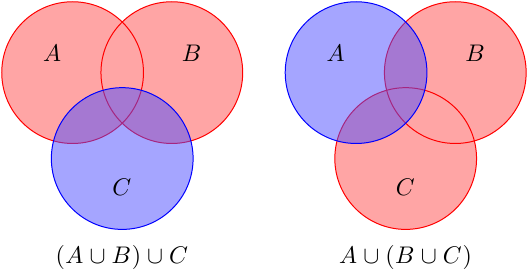- #1
bergausstein
- 191
- 0
the associative axioms for the real numbers correspond to the following statements about sets: for any sets A, B, and C, we have $(A\cup B)\cup C=A\cup (B\cup C)$ and $(A\cap B)\cap C=A\cap (B\cap C)$. Illustrate each of these statements using Venn diagrams.
can you show me how to draw the first one with the union of the sets, after that I'll try to illustrate the second statement. just want to get an idea how to go about it.thanks!
can you show me how to draw the first one with the union of the sets, after that I'll try to illustrate the second statement. just want to get an idea how to go about it.thanks!



